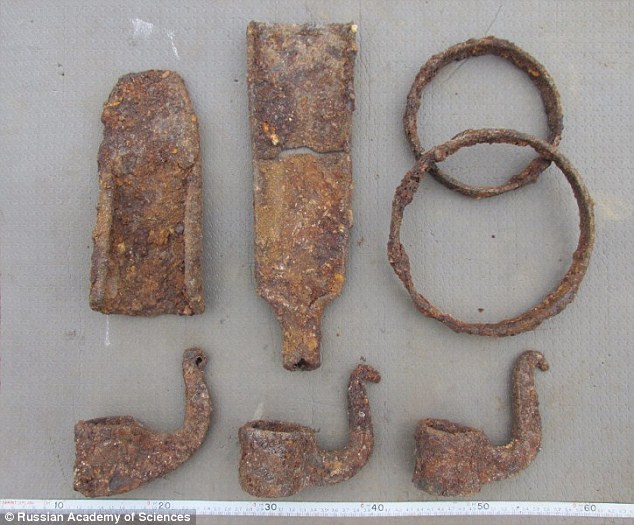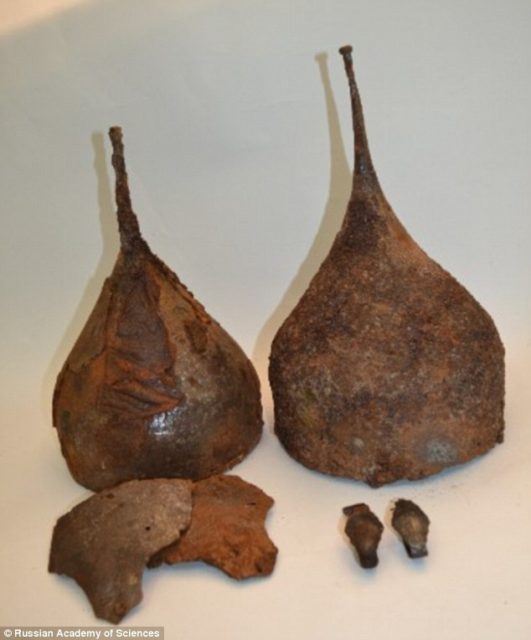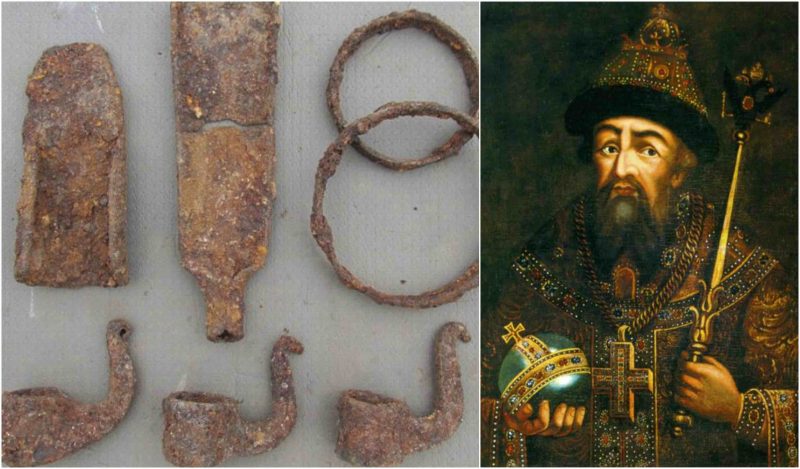Recently, a storehouse dating back to the 16th century was found in Zvenigorod, Moscow. Inside the storehouse there were spiked helmets and weapons made for elite soldiers.
The helmets along with sabres, belts, and arrows,were found in leather boxes, all intended to be used by powerful Russian soldiers. Historians believe these weapons were chosen and made for soldiers that had been handpicked by Ivan the Terrible.

Ivan Vasilevich was the Grand Prince of Moscow from the years 1533 to 1547. He was then the Tsar of All the Russias from the years 1547 until he died in 1584. During his extensive reign, he saw the conquest of several regions like Astrakhan on the Caspian Sea and Siberia. He turned Russia into an empire that covered more than one billion acres.
The storehouse was uncovered by archaeologists from the Institute of Archaeology of the Russian Academy of Sciences. They were originally conducting an emergency dig which involved the new Central Circular Highway.
The storehouse would have originally been in a basement of a mansion that would have belonged to an aristocratic family, most likely the Dobrynins, who had lived in the village of Ignatievskoe. The storehouse was forgotten after the grand mansion burned down in the 17th century. This means that the helmets and weapons are in fantastic condition, since they were never used.

Source: Russian Academy of Science
A member of Ivan the Terrible’s family was actually one of the handpicked thousand. The family member must have been a Boyar, or aristocrat, in the army of 1550.
When the room was found, historians declared that the room had been a private arsenal. It also included a cache of weapons that would have been intended for a military expedition. This is probably why many were found in boxes alongside folded tents.
The remains of about 60 wooden buildings were discovered at the storehouse site. Inside, there were helmets in leather cases, chain mail fragments, swords, sheaths, and fighting belts.
One of the most interesting things was the timber-lined room that contained the weapons. Historians are amazed by just how many weapons were there; it sheds a whole new light on the role of the rich and elite soldiers. There was money to pay for the standing army of troops, and those troops were ready to deploy at any time. This was the soldiers’ main responsibility after they were chosen; each troop would have their own arsenal so they were ready to go to war.

The deputy director of the Institute of Archaeology of the Russian Academy of Sciences, Dr. Asya Engovatova, said that there have never been any discoveries such as this one. Nothing like this has ever been found in a major city, let alone a small village like this one. She also added that thankfully this was found before the construction started for the highway, otherwise everything in the storehouse would have been completely destroyed.
Experts working on the site all believe the most precious find in the storehouse were the spiked helmets. Dr. Engovatova had explained that they are the typical military gear of the Russian knights. They are spherical helmets adorned with gold and silver.
A scientific specialist who was in charge of the excavation, Alexei Alexeyev, said that the helmets found in museums are strange-shaped and they also have decorated ear pieces. The examples in the storehouse are beautifully unique in that they were found in leather storage boxes that had fabric interiors.
He said that now historians can have a better understanding how boyars prepared for military expeditions. These pieces of equipment are the first like them ever found in Russia. They give insight to how a Russian nobleman fought in wars.
